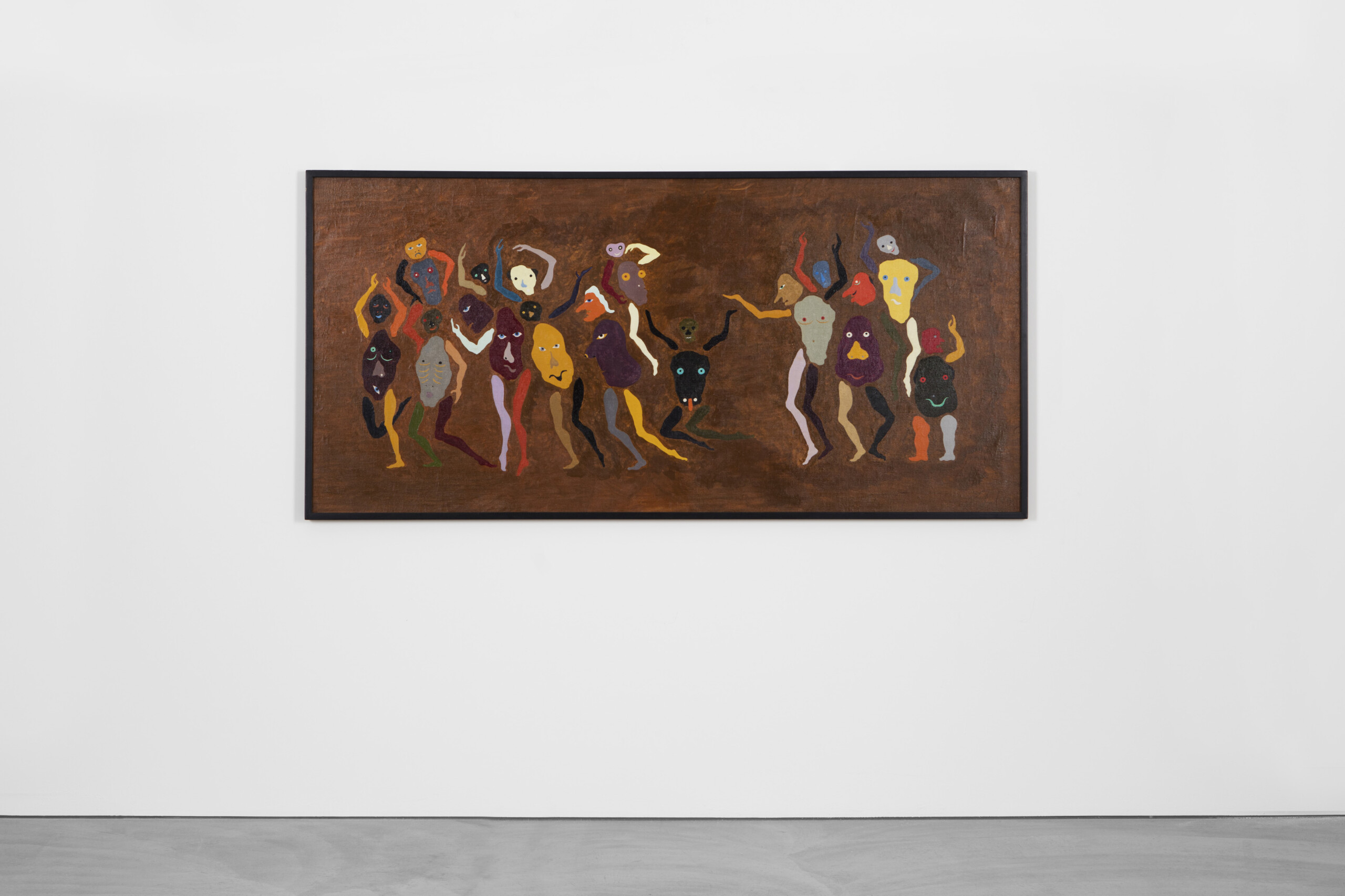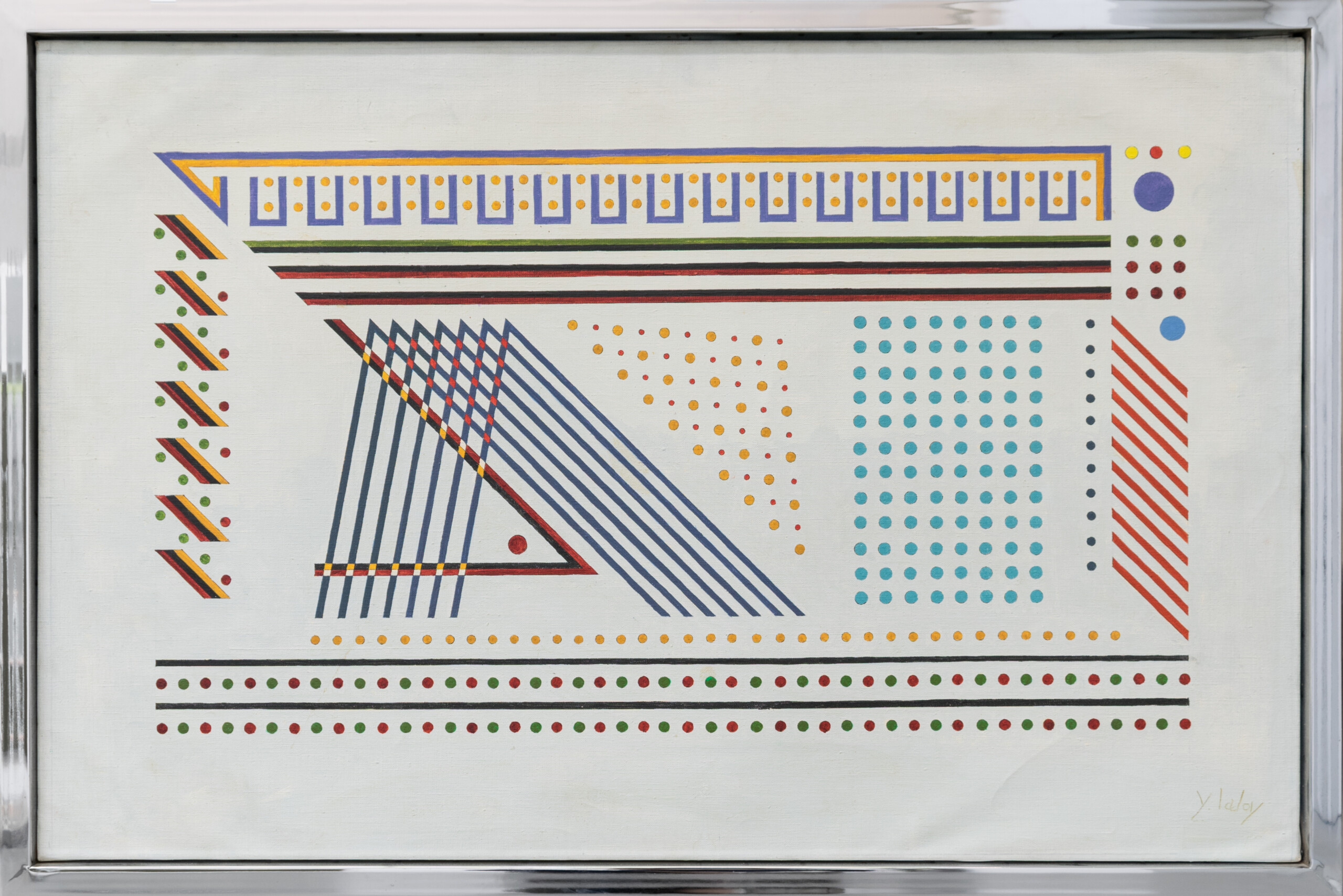
Yves Laloy
1920 Rennes, France – 1999 Cancale, France
Yves Laloy’s paintings defy categorization. André Breton was the first to call his work surrealist, a label that Laloy felt overly limiting. Yet, Laloy embraced another relationship also put forward by Breton: one that invoked an analogous aesthetic relationship between his paintings and Navajo sand paintings, ephemeral images created by Navajo spiritual leaders exclusively as part of the Nightway ceremony. Breton reasoned that, “while a composition of Kandinsky responds to symphonic ambitions, a painting [made] of Navajo sand is primarily concerned with cosmogonic preoccupations and tends to influence the course of the universe in a propitiatory way.” For Breton, Laloy’s paintings enabled the ability to “see” beyond the visible. Paintings like Montez (Uma), on view here, are examples of the artist’s preoccupation with Indigenous art and spiritual practices in the Americas. They also are indicative of a time when many artists and writers in Western Europe were actively appropriating the aesthetics of objects from the Americas and Africa—often without an understanding of these works beyond their visual qualities as a means of accommodating a felt lack in their own societies—the perceived loss of the magic, ritual, and the sacred. Much like Marilou Schultz’s weavings, the patterning in these paintings also invokes the aesthetics of early digital technology.
Error. No content found for Slider

